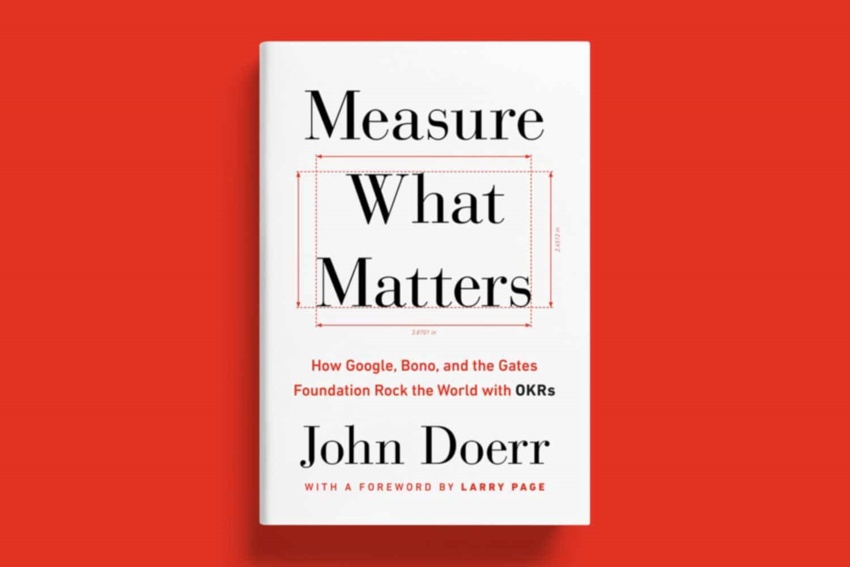
The startup scenario in Bangladesh is evolving fast. In recent years, we have seen a significant number of startups scaling up, thanks to the influx of investments from angels and VCs. Scaling up your venture requires that the company diversifies and expands focus on different areas of the business, devise new strategies, set new goals to achieve substantial revenues or growth.
And this is where the challenges to keep the focus on the wildly important goals arise. The flood of innovative plans and ideas often distracts the leaders from their original vision. If the company loses focus from the primary goals, and rather start channeling energy and resources to the secondary ones, not only the growth falters, but also the company starts to lose competitive advantages. Remember that 95% of business fails within 5 years of starting?
I recall an article in Business Insider where John Ive quoted that Steve Jobs would help him improve his focus by asking every day, - 'How many times did you say no today?' (To learn more about the rules for focused success in this highly distracted world, read my book review on Deep Work in Future Startup or watch this video with Md. Sohan Haidear, Founder & CEO of Smartifier Academy).
On the other hand, being ruthlessly focused on the things that matter leads to achieving dramatic growth and success. Thus, measuring the right things the right way is not only a priority, but it’s also a MUST!
While discussing with various founders and leaders, I found it very alarming that even many prominent startups are operating without a proper goal setting system at all. This is surely a recipe for failure. According to Tony Robbins, “Setting goals is the first step in turning the invisible into the visible.”
Hence I now strongly advocate and preach about OKR (Objectives Key Results) - an effective goal management system used by Google, Amazon, Facebook, LinkedIn, Uber, Dropbox, Intel, Microsoft, Netflix, Oracle, Slack, Salesforce and many others. It is a simple tool to create alignment and engagement around measurable goals.
OKR is central to Google's culture as a management methodology. It ensures that the company focuses on the same important issues throughout the organization. OKR was introduced to Google first by John Doerr. Larry Page, the CEO of Alphabet and co-founder of Google, credited OKRs within the foreword to Doerr's book: "OKRs have helped lead us to 10x growth, many times over. They’ve helped make our crazily bold mission of 'organizing the world’s information' perhaps even achievable. They’ve kept me and the rest of the company on time and on track when it mattered the most."
The acronym OKR stands for Objectives and Key Results, a popular goal management framework that helps companies implement strategy. The benefits of the framework include improved focus, increased transparency, and better alignment. OKR achieves this by organizing employees and the work they do around achieving common objectives.
An OKR consists of an Objective, which defines a goal to be achieved, and normally up to 3 Key Results, which measure progress towards the Objective.
The OKRs are the key focus area for your company, mostly used for the coming quarter. This enables you to move away from micromanagement and helps the team to focus on what is really important for the business.

OKR has a long history that can be traced back to 1954 when Peter Drucker invented Management by Objectives (MBO). In 1968 Andy Grove co-founded Intel and while CEO at Intel he developed MBO into the model of OKR.
In 1975, John Doerr, at that time a salesperson working for Intel, attended a course taught by Andy Grove where he was introduced to the theory of OKR.
In 1999 Doerr, who was then working for Kleiner Perkins - a venture capital firm, introduced the idea of OKRs to a startup called Google, where Kleiner Perkins had invested. The idea took hold and OKRs quickly became central to Google's culture.
Since becoming popular at Google, OKRs have found favor with several other similar tech start-up organizations including Amazon, Facebook, Uber, etc.
An Objective is a description of a goal to be achieved in the future. An Objective sets a clear direction and provides motivation.
John Doerr, one of the most successful venture capitalists of all time, in his best-seller book “Measure What Matters” has defined Objective as:
“An OBJECTIVE, I explained, is simply WHAT is to be achieved, no more and no less. By definition, objectives are significant, concrete, action-oriented, and (ideally) inspirational. When properly designed and deployed, they’re a vaccine against fuzzy thinking—and fuzzy execution.”
A Key Result is a metric with a starting value and a target value that measures progress towards an Objective.
For each Objective, you should have a set of 2 to 5 Key Results (I personally suggest companies define 3 Key Results). More than that and no one will remember them. All Key Results have to be quantitative and measurable. As Marissa Mayer, former Google’s Vice President and Yahoo CEO said: “If it does not have a number, it is not a Key Result.”
Let me give a real-life example so that it’s easier to understand the concept. Suppose you have decided to revamp the customer service in next quarter and set the objective as “Deliver Wow experience to customers”.
This sounds encouraging, but how would you actually measure if the experience is wow? That is why you need key results. Net Promoter Score (NPS) can be a good option to measure customer satisfaction, and you can also look at the Customer Retention Rate. But measuring NPS and retention alone can be misleading because you may spend too much and ROI can be negative. So we would add a countermeasure such as Customer Acquisition Cost. We want to create a wow experience while keeping costs in control.
So the complete example would be-
Objective: Deliver Wow experience to customers
Key Results:
OKRs are preached across the silicon valley as a great tool to find order in chaos and focus the firm's energy. It makes you empowered to make decisions and create plans to actually move your work forward, not drowning in endless busywork that doesn't get you anywhere closer to meeting your goals. I can term the following 5 as major benefits of OKR:
Specific Goals: With OKR, you set the destination where you want to take the company, and you decide the paths you want to follow to reach the destination. Goals are the fuel in the furnace of achievement.
Strategic Alignment: OKR helps the managers and employees align the work they do, ensuring everyone in the organization is moving in the same direction.
Focused Execution: OKR helps to actively work on the wildly important goals by prioritizing only the work that has the biggest business impact.
Engaged employees: People achieve remarkable results when they’re engaged with a purpose. OKR helps communicate and execute strategy in a way everyone understands.
Autonomy, accountability, and transparency: Teams receive a clear direction and are free to choose how to achieve their OKRs. They set and become responsible for their objectives, with clear success criteria known to the whole company, creating mutual obligations and transparency throughout the company.
“Now, OKRs are not a silver bullet. They cannot substitute for sound judgment, strong leadership, or creative workplace culture. But if those fundamentals are in place, OKRs can guide you to the mountaintop.” - John Doerr.
There are adequate resources available online that provide useful guidelines about how to integrate OKRs in your company. For the more avid readers, I recommend Measure What Matters by John Doerr, High Output Management by Andy Grove, The Great CEO Within by Matt Mochary and Radical Focus by Christina R Wodtke. I also wish to write a separate OKRs book review article in Future Startup if startups find OKR helpful and show a willingness to use the methodology.
You can also reach out to experienced consultants, mentors or investors who are subject matter experts on OKRs to train your management team and help to set up OKRs in your company. Normally the CEOs and top leaders are so engaged with daily operations it becomes difficult to manage the time to learn from scratch and insert the system in the management framework. But to become successful, goal management is something leaders can’t afford overlooking.
Here I am providing a few guidelines that we have followed and found effective:
Yearly: Company Objectives run in yearly cycles which coincide with most companies' yearly strategic review cadence. This makes it simple to take the organization's strategy and translate it into Company Objectives.
Quarterly: Group OKRs owned by teams and departments follow a quarterly cycle. It is typically set at the beginning of the quarter. At the end of the quarter, you can grade yourself how close you came to achieving those goals. This allows shorter review cycles and makes it easy for organizations to change direction if tactics are not driving progress towards the Company OKRs for the year.
This is a million-dollar question of which you need to find the answer! You may actually prefer or use any other useful goal-setting techniques as well. But it’s of paramount importance and urgent to have a system in place to track and measure what really matters in your business.
For early-stage startups that yet haven’t established product-market fit or validated MVP, I don’t recommend OKRs. As I mentioned in the Lean Startup book review, the lean methodology would be appropriate for them to validate ideas on a more regular basis, like daily or weekly.
Few words of caution - OKR as a theory sounds inspiring. But implementing and getting the best out of it is a completely different story. Therefore, please don’t try this half-heartedly.
While helping companies, I pinpointed the following challenges organizations face and need to overcome to set up OKRs successfully:
But once done properly, OKRs can help companies achieve tremendous success, as already evident by the multibillion-dollar companies like Google, Amazon or Facebook. Remember that a goal properly set is halfway reached. Whether your company is scaling up and eyeing 10X or more growth, or whether it is already stable and you want to continue steady growth - OKR can be the right tool you need at this moment.
Now it’s action time to measure what really matters and grow!
Cover photo: Photo by NeONBRAND on Unsplash
